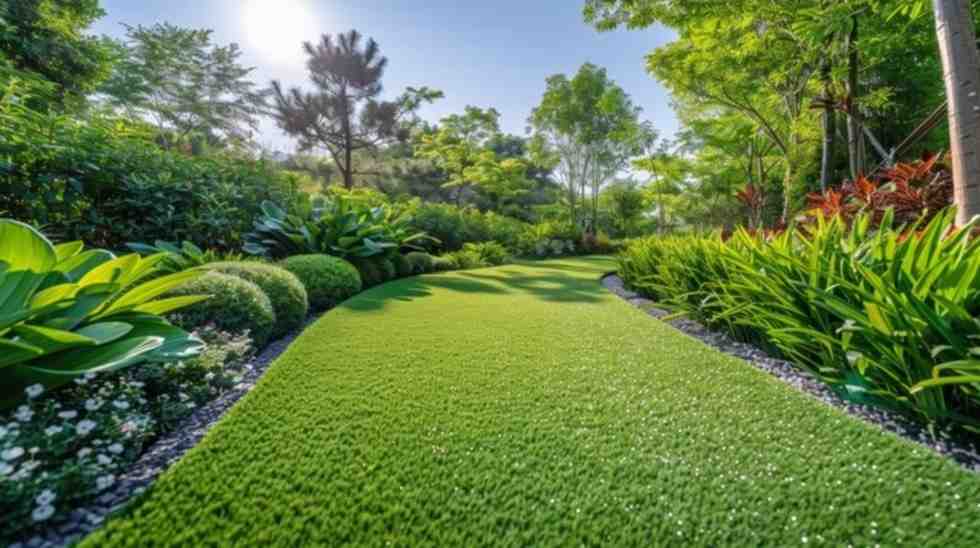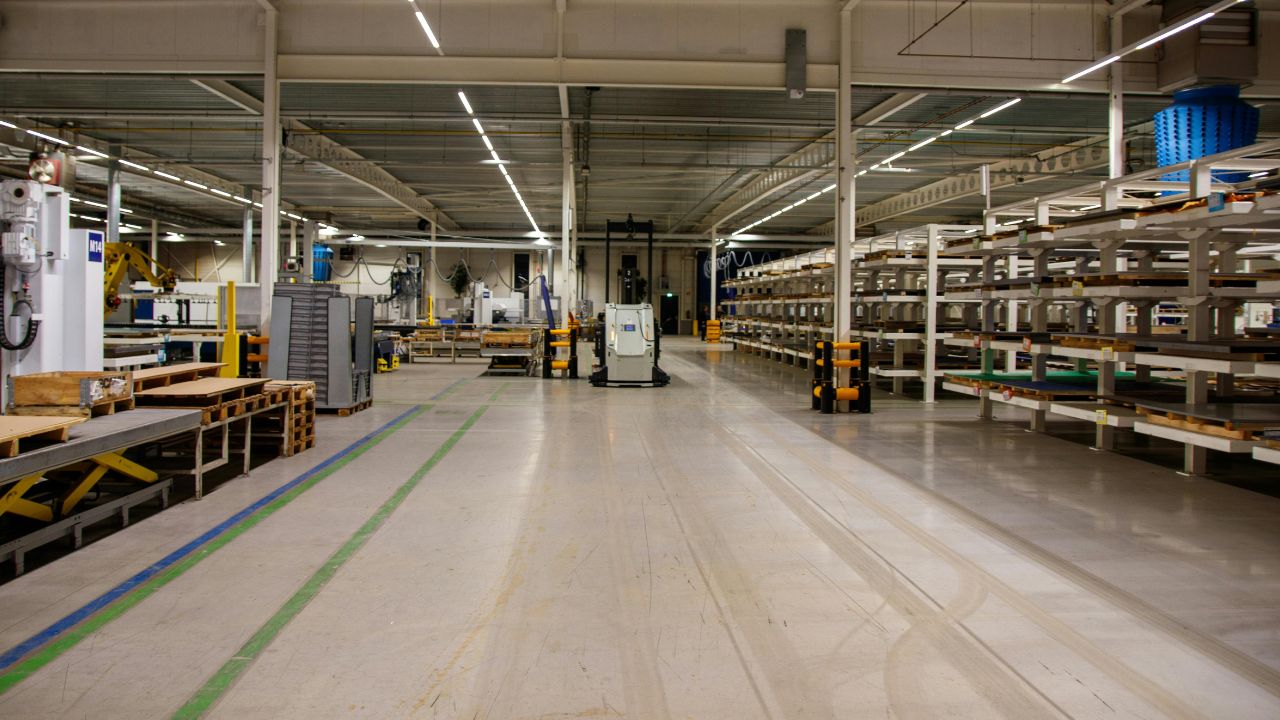Commercial Landscaping: Real vs. Synthetic Grass
Choosing between natural and synthetic grass for commercial properties involves much more than simply deciding what looks good. This decision impacts not only aesthetics but also long-term costs, environmental considerations, and usability. With increasing options and innovations, both types of grass offer distinct advantages and challenges for facility managers. Exploring these factors can help create a tailored solution for outdoor spaces.
Visual Characteristics and Design Impact
The visual quality of outdoor spaces heavily influences how commercial properties are perceived. Natural grass has an organic charm that evolves with the seasons. Its appearance changes based on rainfall, sunlight, and growth cycles, creating a dynamic and living aspect to outdoor areas. These natural variations, while appealing to some, may require constant attention to maintain a neat and polished look, especially in areas meant to impress clients or customers.
Synthetic grass, by contrast, offers a perfectly uniform appearance. With advanced manufacturing techniques, artificial turf closely mimics the texture and color of natural grass, offering a clean and consistent look year-round. This consistency appeals to businesses that want to present a flawless exterior without worrying about brown patches or irregular growth. Additionally, synthetic grass allows for precise control of design elements. Complex patterns, branded spaces, or unique shapes can be easily achieved, making it a versatile choice for creative landscaping.
Maintenance Requirements
The ongoing care and upkeep required for grass often drive decisions about which type to choose.
- Natural Grass Maintenance: Real grass demands significant attention. Maintenance involves watering, fertilizing, mowing, and addressing issues like weeds or pests. Each task requires time, labor, and resources. In regions with challenging weather conditions, these efforts increase substantially. Prolonged dry spells may necessitate irrigation systems, while heavy rains could lead to drainage problems or overgrowth.
- Synthetic Grass Maintenance: For synthetic grass, maintenance is far simpler. Occasional cleaning to remove dirt, debris, or spills is typically all that’s needed to keep it looking pristine. No mowing, watering, or fertilizing is required, saving on labor and reducing reliance on natural resources. Businesses with limited groundskeeping budgets often find this reduced maintenance appealing. Additionally, synthetic turf eliminates seasonal changes in appearance, ensuring the property always looks professionally maintained.
Environmental Impact
Understanding the environmental implications of grass options is essential, especially for businesses aiming to meet sustainability goals.
- Natural Grass: Natural grass contributes positively to the ecosystem by absorbing carbon dioxide, releasing oxygen, and supporting biodiversity. Its roots stabilize soil and reduce erosion, while its surface cools the environment and improves air quality. However, maintaining natural grass often requires heavy water usage and the application of chemical fertilizers or pesticides, which can harm surrounding ecosystems. Mowing equipment also contributes to emissions, compounding the environmental cost.
- Synthetic Grass: Synthetic grass eliminates water and chemical usage entirely. Once installed, it requires no irrigation or treatment, significantly reducing the property’s environmental footprint in these areas. On the downside, synthetic turf production relies on non-renewable materials, and disposal at the end of its life cycle poses challenges. Some manufacturers offer recyclable options to address these concerns, but these remain less common. Businesses should weigh the immediate environmental benefits of reduced resource usage against the long-term impact of manufacturing and disposal.
Weather Resistance and Durability
Grass used in commercial spaces must withstand the elements and perform reliably regardless of weather conditions.
- Natural Grass: Natural grass is highly sensitive to climate changes. Prolonged exposure to extreme heat can cause browning or dieback, while heavy rains might lead to muddy patches, uneven growth, or soil erosion. During winter, frost can damage grass blades and slow recovery during the growing season.
- Synthetic Grass: Synthetic turf, built to resist wear and tear, maintains its appearance regardless of climate. High-quality artificial grass products include UV-resistant coatings to prevent fading under intense sunlight. Drainage systems integrated into the turf prevent pooling or flooding during heavy rains, and the material doesn’t freeze or degrade in cold conditions. This resilience makes synthetic grass especially appealing for regions with unpredictable or extreme weather.
Usability and Traffic Tolerance
Commercial properties often experience significant foot traffic in outdoor spaces, especially in areas designed for public access, recreation, or events.
- Natural Grass: Natural grass struggles in these scenarios, as heavy use compacts the soil, wears down grass blades, and creates bare patches. Maintaining a lush, healthy lawn in high-traffic areas requires ongoing reseeding, aeration, and repair, which can be labor-intensive and costly.
- Synthetic Grass: Synthetic grass is designed to handle high-use scenarios without degradation. Its durability makes it ideal for playgrounds, sports fields, outdoor event venues, and other spaces where heavy traffic is expected. Certain varieties include padded backing for added safety, making them a popular choice for areas where children or athletes will be active. While it may feel less natural to the touch, synthetic turf’s reliability under demanding conditions makes it a practical solution for businesses prioritizing functionality.
Cost Considerations
Budgeting plays a crucial role in deciding between real and synthetic grass.
- Natural Grass: The costs associated with natural grass include the initial expense of planting or sod installation, as well as ongoing maintenance expenses for water, fertilizer, pest control, and mowing equipment. Over time, these recurring costs can add up significantly, particularly for large commercial properties.
- Synthetic Grass: Synthetic grass, while more expensive to install initially, offers substantial savings in the long run. With minimal upkeep required, businesses can eliminate many recurring expenses and redirect resources toward other operational needs. The lifespan of synthetic turf—often 15–20 years—ensures that this investment continues to deliver value over time. Conducting a detailed cost analysis can help businesses determine which option aligns better with their financial goals.
Safety and Comfort
Safety is a priority for many commercial spaces, especially those catering to families, children, or pets.
- Natural Grass: Natural grass provides a soft, cool surface that minimizes the risk of injuries. However, its reliance on fertilizers and pesticides can introduce potential health concerns. In high-traffic areas, exposed soil or muddy patches may pose slipping hazards.

- Synthetic Grass: Synthetic grass eliminates the need for chemical treatments, creating a cleaner environment. Many artificial turf options include additional safety features, such as padding to reduce impact injuries. However, one drawback is that synthetic grass can retain heat, becoming uncomfortably warm on sunny days. Selecting heat-resistant materials or providing shade can help address this issue.
Design Versatility
Both natural and synthetic grass offer flexibility in how outdoor spaces are designed, but each comes with unique limitations.
- Natural Grass: Natural grass allows for species selection, letting businesses choose a variety that thrives in local conditions or meets specific aesthetic goals. For instance, a softer variety may be chosen for lounging areas, while hardier species could be used for pathways or decorative spaces.
- Synthetic Grass: Synthetic grass provides even greater control over design elements. It can be cut, shaped, or colored to meet any specification, offering opportunities for creative layouts that natural grass cannot achieve. This versatility makes artificial turf a popular choice for spaces requiring intricate patterns, logos, or artistic features.
Combining Both Options
For businesses unable to decide between real and synthetic grass, combining the two may provide the best of both worlds. Natural grass can be reserved for low-traffic or ornamental areas, preserving its ecological and aesthetic benefits. Synthetic turf can be installed in high-use zones or places where maintenance is particularly challenging. This hybrid approach ensures durability and cost savings while maintaining the charm of natural greenery.
Why Work with National Facility Contractors for Your Landscaping Needs
Facility managers juggling multiple responsibilities need a partner they can rely on to keep their outdoor spaces in pristine condition. National Facility Contractors (NFC) specializes in maintaining both natural and synthetic grass landscapes, tailoring solutions to the unique needs of each property. Whether it’s routine mowing, fertilization, or debris removal for natural grass or thorough cleaning and inspections for synthetic turf, NFC’s expertise ensures your lawn remains visually stunning and functional year-round.
NFC also excels in handling hybrid landscapes, seamlessly integrating natural and synthetic grass for properties that require a mix of aesthetics and durability. By partnering with NFC, you’ll save time, reduce costs, and ensure your outdoor spaces reflect the professionalism and care your business stands for.
Conclusion
Commercial properties have diverse requirements, and the decision between natural and synthetic grass should align with practical needs and aesthetic goals. By evaluating factors such as foot traffic, regional climate, and maintenance resources, businesses can create outdoor spaces that enhance usability and curb appeal.
Ready to design the perfect landscape for your property? Contact National Facility Contractors today for expert guidance and customized solutions that balance beauty, functionality, and sustainability. With NFC by your side, achieving a stunning and efficient outdoor space has never been easier.






